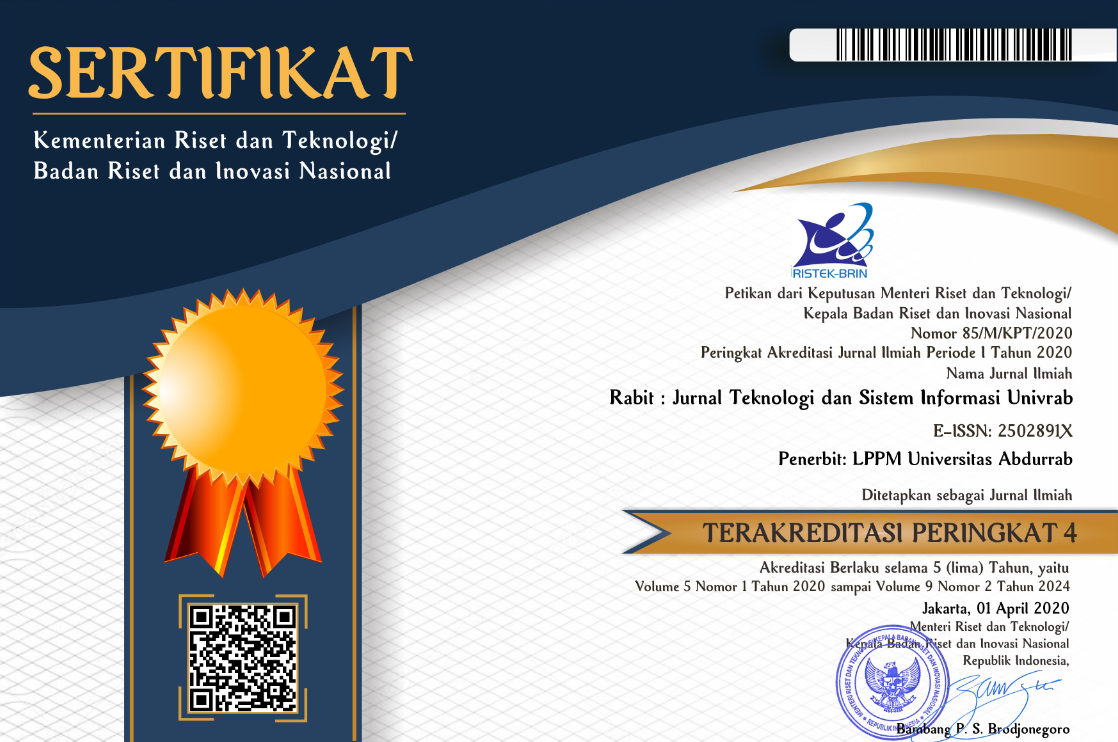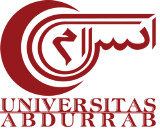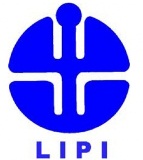PEMODELAN ADDIE DALAM PENGEMBANGAN KURIKULUM 13 PADA PEMBELAJARAN BAHASA INGGRIS TINGKAT SEKOLAH DASAR BERBASIS ANDROID
Abstract
The proliferation of science and technology that is so rapid today supports and makes it easier for all the activities in various areas of human life, one of them being education. The K–13 curriculum requires schooling. The excess K–13 is to require students to be more independent, creative, and innovative, emphasizing character education. And the judgment process is made up of all the aspects of attitude, activity, skill, and knowledge. English is essential to study and be understood by the students because of the challenge of global development, and one of its supporting tools is mastery of English as a communication medium in the global and international world. Purpose: This study made it easier for students to tackle mainly the English learning process pronunciation in the form of interactive systems by applying speech and voice technologies recognition. Data collection from library studies, interviews, and observatories Methods of quantitative analysis are used in this research process for testing. Testing systems using black box testing with a successful walk and user acceptance test (UAT) and getting an average of 85% of student responses The results of this study prove that interactive system applications generate 86% and 84% of the result of media appropriations and material content, respectively, that are perfectly feasible in the learning process.
References
A. F. Muhammad, A. Alimudin, P. Elektronika, and N. Surabaya, “Education Journal : Journal Education Research and Development Penerapan Teknology Speech Recognition Untuk Latihan Pronunciation Bahasa Inggris Melalui Metode Dictation Di Program Studi Multimedia Broadcasting,” pp. 23–34.
P. S. Hidayati and A. Rosyid, “Pedagonal : Jurnal Ilmiah Pendidikan Melalui Mobile Assisted Language Learning ( MALL ):,” Pedago. J. Ilm. Pendidik., vol. 04, no. 2, pp. 61–66, 2020, [Online]. Available: http://journal.unpak.ac.id/index.php/pedagonal
R. Prabowo et al., “Aplikasi Android " Kids Abc " Berbasis Game Sebagai,” pp. 55–64, 2013.
Z. C, Y. Herdiana, Y. Suharya, and N. I. Putri, “Tematik : Jurnal Teknologi Informasi Komunikasi (e-Journal) Vol. 8 No. 2 Desember 2021,” Temat. J. Teknol. Inf. Komun., vol. 8, no. 2, pp. 160–175, 2021.
D. Aryani, D. Iskandar, and F. Indriyani, “Perancangan Smart Door Lock Menggunakan Voice Recognition Berbasis Rapberry Pi 3,” J. CERITA, vol. 4, no. 2, pp. 180–189, 2018, doi: 10.33050/cerita.v4i2.641.
D. Thoriq, A. Suci, and N. R. Dadan, “Google Home Mini Sebagai Sistem Pengontrol Perangkat Elektronik Berbasis Voice Recognition,” e-Proceeding Appl. Sci., vol. 5, no. 3, p. 2870, 2019, [Online]. Available: https://openlibrarypublications.telkomuniversity.ac.id/index.php/appliedscience/article/view/11289
A. Widyaningrum, “Pembelajaran Pronunciation Melalui Lagu Anak Dalam Mata Pelajaran Bahasa Inggris Bagi Siswa Sd Kramat Kabupaten Kudus,” Culture, vol. 6, no. 1, pp. 65–84, 2019.
Lina Herlina, “Efektivitas Penggunaan Film dalam Mengajar Pronunciation,” J. BELAINDIKA (Pembelajaran dan Inov. Pendidikan), vol. 2, no. 2, pp. 1–9, 2020, doi: 10.52005/belaindika.v2i2.32.
D. S. Rahmantara, K. D. K. Wardhani, and M. R. A. Saf, “Aplikasi Pengenalan Nama Surah pada Juz ke 30 Kitab Suci Al-Qur’an Menggunakan Speech Recognition,” J. RESTI (Rekayasa Sist. dan Teknol. Informasi), vol. 2, no. 1, pp. 345–353, 2018, doi: 10.29207/resti.v2i1.285.
N. Aini, D. Andreswari, and F. Farady C, “Aplikasi Belajar Daring Bahasa Inggris Kelas VII Smp Menggunakan Teknologi Voice Recognition Berbasis Android (Studi Kasus: SMP Negeri 17 Bengkulu),” Rekursif J. Inform., vol. 10, no. 1, pp. 81–95, 2022, doi: 10.33369/rekursif.v10i1.17257.

This work is licensed under a Creative Commons Attribution-NonCommercial-ShareAlike 4.0 International License.
Copyright Notice
The copyright of the received article shall be assigned to the publisher of the journal. The intended copyright includes the right to publish the article in various forms (including reprints). The journal maintains the publishing rights to published articles. Therefore, the author must submit a statement of the Copyright Transfer Agreement.*)
This work is licensed under a Creative Commons Attribution-NonCommercial-ShareAlike 4.0 International License.
In line with the license, authors and any users (readers and other researchers) are allowed to share and adapt the material only for non-commercial purposes. In addition, the material must be given appropriate credit, provided with a link to the license, and indicated if changes were made. If authors remix, transform or build upon the material, authors must distribute their contributions under the same license as the original.
Please find the rights and licenses in RABIT : Jurnal Teknologi dan Sistem Informasi Univrab. By submitting the article/manuscript of the article, the author(s) accept this policy.
1. License
The non-commercial use of the article will be governed by the Creative Commons Attribution license as currently displayed on Creative Commons Attribution-NonCommercial-ShareAlike 4.0 International License.
2. Author’s Warranties
The author warrants that the article is original, written by stated author(s), has not been published before, contains no unlawful statements, does not infringe the rights of others, is subject to copyright that is vested exclusively in the author and free of any third party rights, and that any necessary written permissions to quote from other sources have been obtained by the author(s).
3. User Rights
RABIT's spirit is to disseminate articles published are as free as possible. Under the Creative Commons license, RABIT permits users to copy, distribute, display, and perform the work for non-commercial purposes only. Users will also need to attribute authors and RABIT on distributing works in the journal.
4. Rights of Authors
Authors retain all their rights to the published works, such as (but not limited to) the following rights;
- Copyright and other proprietary rights relating to the article, such as patent rights,
- The right to use the substance of the article in own future works, including lectures and books,
- The right to reproduce the article for own purposes,
- The right to self-archive the article,
- The right to enter into separate, additional contractual arrangements for the non-exclusive distribution of the article's published version (e.g., post it to an institutional repository or publish it in a book), with an acknowledgment of its initial publication in this journal (RABIT : Jurnal Teknologi dan Sistem Informasi Univrab).
5. Co-Authorship
If the article was jointly prepared by other authors, any authors submitting the manuscript warrants that he/she has been authorized by all co-authors to be agreed on this copyright and license notice (agreement) on their behalf, and agrees to inform his/her co-authors of the terms of this policy. RABIT will not be held liable for anything that may arise due to the author(s) internal dispute. RABIT will only communicate with the corresponding author.
6. Royalties
This agreement entitles the author to no royalties or other fees. To such extent as legally permissible, the author waives his or her right to collect royalties relative to the article in respect of any use of the article by RABIT.
7. Miscellaneous
RABIT will publish the article (or have it published) in the journal if the article’s editorial process is successfully completed. RABIT's editors may modify the article to a style of punctuation, spelling, capitalization, referencing and usage that deems appropriate. The author acknowledges that the article may be published so that it will be publicly accessible and such access will be free of charge for the readers as mentioned in point 3.
 PDF (Bahasa Indonesia)
PDF (Bahasa Indonesia)
 Abstract views: 226
Abstract views: 226
 downloads: 224
downloads: 224

 :
:












